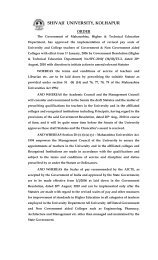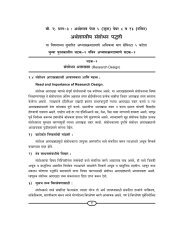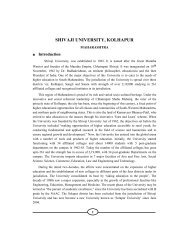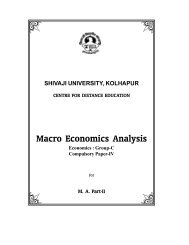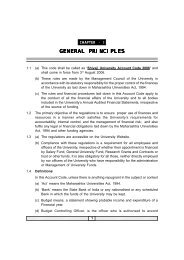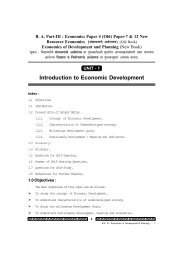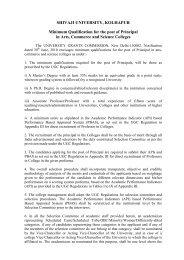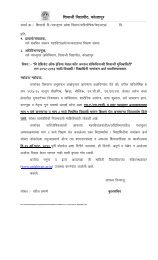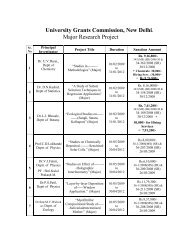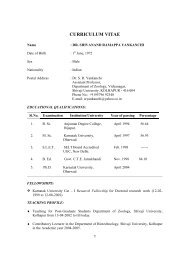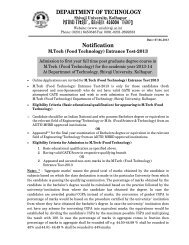M.Sc. Chemistry Syllabus Revised Implemented ... - Shivaji University
M.Sc. Chemistry Syllabus Revised Implemented ... - Shivaji University
M.Sc. Chemistry Syllabus Revised Implemented ... - Shivaji University
You also want an ePaper? Increase the reach of your titles
YUMPU automatically turns print PDFs into web optimized ePapers that Google loves.
General discussion on the properties of the non – transition elements, special<br />
features of individual elements, synthesis, properties and structure of halides and<br />
oxides of the non – transition elements, Polymorphism in carbon, phosphorous and<br />
sulphur, Synthesis, properties and structure of boranes, carboranes, silicates,<br />
carbides, phosphazenes, sulphur – nitrogen compounds, peroxo compounds of<br />
boron, carbon,sulphur, structure and bonding in oxyacids of nitrogen,<br />
phosphorous, sulphur and halogens, interhalogens, pseudohalides.<br />
UNIT-II<br />
a) Organometallic <strong>Chemistry</strong> of transition elements [08]<br />
Ligand hapticity, electron count for different types of organometallic compounds,<br />
18 and 16 electron rule exceptions, synthesis, structure and bonding,<br />
organometallic reagents in organic synthesis and in homogeneous catalytic<br />
reactions (Hydrogenation, hydroformylation, isomerisation and polymerisation), pi<br />
metal complexes, activation of small molecules by coordination<br />
b) Metal – ligand equilibria in solution [ 07]<br />
Stepwise and overall formation constants and their interaction, trends in stepwise<br />
constants, factors affecting the stability of metal complexes with reference to<br />
nature of metal ion and ligand, chelate effect and its thermodynamic origin,<br />
determination of formation constants by pH – metry, spectrophotometry methods.<br />
UNIT-III<br />
Studies and applications of Lanthanides and Actinides [15]<br />
Spectral and magnetic properties, use of lanthanide compounds as shift reagents,<br />
Modern methods of separation of lanthanides and actinides, Organometallic<br />
chemistry applications of lanthanide and actinide compounds in Industries.<br />
UNIT-IV [07]<br />
a) <strong>Chemistry</strong> in Non- aqueous solvents, Classification of solvents, properties,<br />
leveling effect, type reactions in solvents, chemistry of liquid ammonia, liquid<br />
dinitrogen tetraoxide and anhydrous sulphuric acid with respect to properties,<br />
solubilities and reactions.<br />
b) Nuclear and radiochemistry [08]<br />
Radioactive decay and equilibrium, nuclear reactions, Q value, cross-sections,<br />
types of reactions, chemical effects of nuclear transformation, fission and fusion,<br />
fission products and fission yield<br />
Recommended Books:<br />
22



